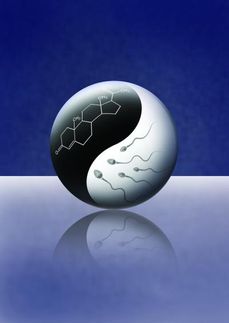The Trap Snaps Shut
Researchers isolate the substance that causes Venus flytraps to close
Advertisement
The Venus flytrap is a carnivorous plant luring insect prey with drops of liquid. The trap snaps shut like a steel jaw when an insect touches one of the very fine hairs within. The prey is caught – digestion begins. Minoru Ueda and a research team from the Universities of Tohoku, Hirosaki, and Hiroshima have now found chemicals that trigger the trap to snap shut. As the scientists report in the journal ChemBioChem, when these substances are applied to the plants, the traps close even without stimulation of the sensory hairs.
The Venus flytrap has a “memory”. In order to avoid reacting to a “false alarm”, the plant does not snap shut at the first touch of the sensory hairs. Instead, there must be at least two stimulations of the hairs within 30 seconds. After that, the trap closes fast so that the prey cannot make a last-gasp escape. How does the trap’s memory work? The hypothesis is that certain messenger chemicals are released every time the hairs are stimulated, and these substances accumulate in the trap. Only when these substances reach a certain threshold concentration does an ion channel open – like the mechanism used to transmit signals in our nerve cells—producing an action potential that allows the leaves of the trap to shut.
The researchers cloned a strain of genetically uniform Venus flytraps. They used these to make an extract, and separated out various fractions of this extract. They cut off individual traps and placed them with their stems in solutions of the various fractions of the extract. The partial plants were able to soak up the liquid. Some fractions triggered the traps to snap shut without stimulation of the sensory hairs. The scientists used various methods to further separate the active fractions and tested the new fractions again. In the end, the researchers were able to isolate two substances, termed “trap-closing factors”, which trigger the traps to snap shut. One of these substances was identified by means of various analytical techniques. The active substance was found to be the potassium salt of a glucose-containing derivative of jasmonic acid, a common plant hormone. The second substance has a higher molecular mass. It consists of many different sugar components that have not yet been completely identified because the substance has only been isolated in very small amounts.
Experiments with different concentrations and amounts of messenger-containing solutions revealed that the closing of the traps does not depend on a specific concentration of the trigger substance, but on the overall amount of the substance that is absorbed. This supports the hypothesis that a threshold value must be reached to trigger the Venus flytrap to snap shut.
Original publication: Minoru Ueda, Tohoku University et al.; "Trap-Closing Chemical Factors of the Venus Flytrap (Dionaea muscipulla Ellis)"; ChemBioChem 2010, 11, No. 17, 2378–2383.























































